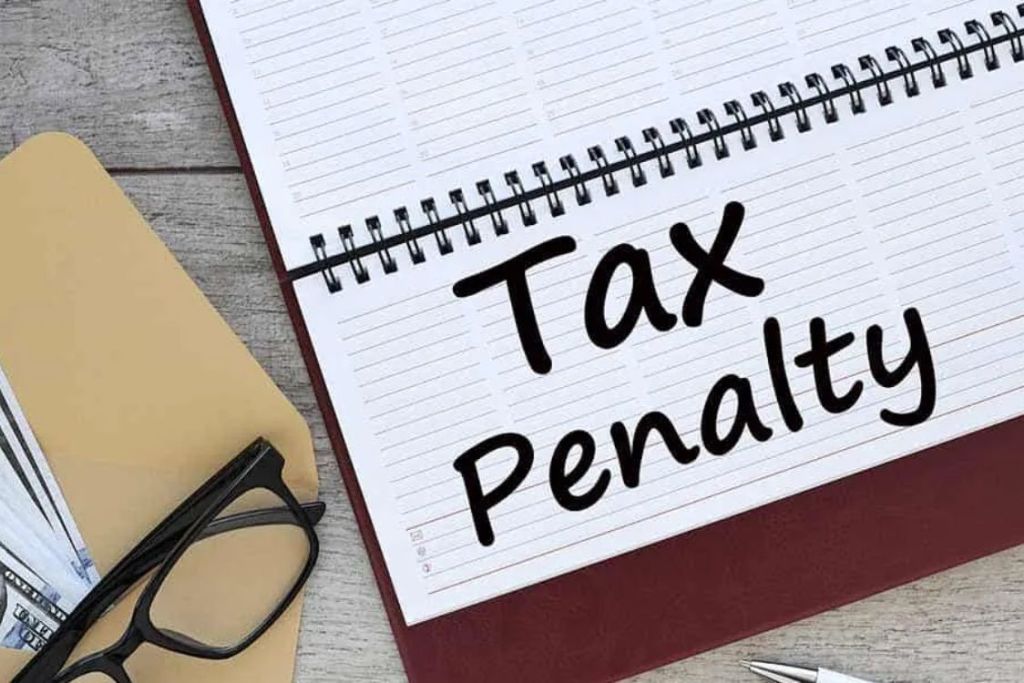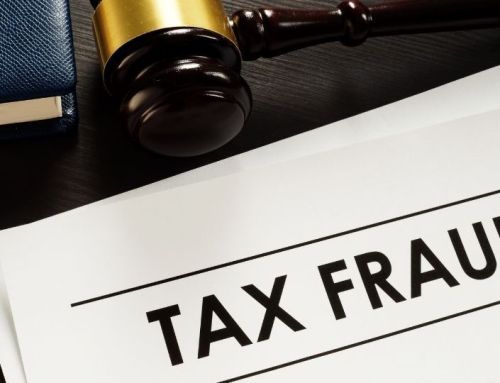HMRC’s power to open investigations is bounded by time limits and scope rules—but navigating them is complex. At The Taxcom, we believe understanding these boundaries helps businesses and individuals manage risk and avoid surprise exposures.
Let’s begin by unpacking the basic framework of the HMRC tax investigation process.
Standard Time Limits for HMRC Enquiries
Understanding the standard time limits HMRC uses to open a tax investigation is critical. These limits set the legal boundaries for how far back HMRC can look into your tax affairs. The length of time depends on the nature of the investigation and whether HMRC believes there has been an error, carelessness, or deliberate behaviour.
The 12-Month Rule – Normal Time Limit
In most cases, HMRC has 12 months from the date a tax return is filed to open an enquiry. This applies to:
- Self Assessment tax returns
- Corporation Tax returns
- Partnership returns
If you file your return early, the 12-month clock still starts from the filing deadline—not the date of submission. For example, if you file your Self Assessment for 2023–24 in April 2024, HMRC still has until 31 January 2026 to open an enquiry.
This standard time frame is commonly referred to as the normal enquiry window.
Discovery Assessments – Beyond the 12 Months
HMRC can go beyond the 12-month limit using what’s called a discovery assessment. These are used when:
- New information comes to light
- A loss of tax is found
- HMRC believes the return was incorrect
Depending on the situation, the investigation window can be extended as follows:
| Behaviour Type | HMRC Time Limit to Investigate |
| Careless behaviour | 6 years from the end of the tax year |
| Deliberate understatement | 20 years from the end of the tax year |
| Innocent error (no fault) | Usually remains within 12 months |
What Triggers These Extended Limits?
HMRC needs to prove there has been:
- Carelessness – e.g. not taking reasonable care with records or figures
- Deliberate behaviour – e.g. knowingly omitting income or inflating expenses
- Failure to notify – e.g. not registering for tax when required
The greater the perceived risk or wrongdoing, the further back HMRC can go—up to 20 years.
Types of HMRC Investigations and Their Scope
The scope of an HMRC investigation often depends on the type of check being conducted. Understanding the differences helps you gauge the level of scrutiny, the documentation you’ll need, and the potential implications.
Aspect Enquiry vs Full Enquiry
HMRC’s enquiries fall into two broad categories:
Aspect Enquiry
This is a targeted enquiry into one or more specific areas of your tax return. HMRC may suspect errors or inconsistencies in a particular section, such as:
- Rental income
- Capital gains
- Business expenses
An aspect enquiry doesn’t mean your entire return is under review, but it can escalate if HMRC uncovers wider issues.
Full Enquiry
In a full enquiry, HMRC reviews the entire return and often the complete financial records of the taxpayer or business. This usually happens when:
- There’s a pattern of discrepancies
- HMRC has risk indicators or third-party information
- Your business operates in a sector with high perceived risk (e.g. cash-intensive trades)
Compliance Checks
HMRC also conducts compliance checks outside of standard tax return enquiries. These checks cover:
- VAT returns
- PAYE and payroll records
- Construction Industry Scheme (CIS) submissions
- R&D tax credit claims
These checks can be triggered at random or targeted based on anomalies or trends in your filings.
Criminal Investigations
In the most serious cases, HMRC may launch a criminal investigation. This is reserved for cases involving:
- Tax evasion
- Fraudulent activity
- Money laundering
Criminal tax investigations have no formal time limits and can use powers like search warrants and arrests. These are rare but carry the risk of prosecution and custodial sentences.
How the Scope is Determined
HMRC uses a mix of data, analytics, and intelligence to assess risk. The scope of an enquiry will reflect:
- The potential tax loss
- The taxpayer’s behaviour
- Industry benchmarks and comparables
- Information shared by other bodies (banks, overseas authorities, whistle-blowers)
Understanding the type and scope of investigation helps prepare the appropriate response and gauge what records may be reviewed.
What Triggers an HMRC Investigation?
HMRC does not need to suspect wrongdoing to open an investigation. Many checks begin with routine risk profiling, while others are sparked by anomalies, patterns, or tips. Knowing what can trigger an investigation helps you take preventative steps.
Risk-Based Selection
Most HMRC tax investigations now arise from risk profiling using Connect—HMRC’s powerful data analysis system. Connect gathers and cross-checks information from:
- Tax returns
- Bank accounts and financial institutions
- DVLA and Land Registry data
- Social media and online platforms
- Information shared internationally under tax treaties
Discrepancies between your declared income and lifestyle indicators—such as property ownership or visible spending—can trigger scrutiny.
Common Red Flags
The following factors often lead to investigations:
- Large fluctuations in income or expenses year to year
- Consistently late filings or payments
- Claiming losses over multiple years
- Unusually high expense claims relative to income
- Operating in a high-risk sector (e.g. hospitality, construction, cash-based trades)
- Mistakes or omissions in your tax return
- Inconsistencies between personal and business finances
HMRC may also open an enquiry if your accountant submits corrected returns, or if you voluntarily disclose prior errors. While voluntary disclosure is wise, it can still lead to further questions.
Third-Party Information
HMRC often receives information from:
- Banks and credit card providers
- Tip-offs (disgruntled employees, former partners, business competitors)
- Other government departments (e.g. DWP, Companies House)
- International tax authorities (under CRS and FATCA frameworks)
They are not required to disclose the source of such data at the outset of an investigation.
Random Checks
Not all investigations are targeted. HMRC occasionally performs random compliance checks on a small percentage of taxpayers and businesses to monitor general compliance levels. These can be disruptive despite no specific suspicion.
Follow-on from Other Enquiries
An enquiry into VAT may uncover issues with Corporation Tax. A PAYE check may raise red flags around benefits in kind. One investigation can lead to several. HMRC departments now work in a more joined-up way than in the past.
How Long Can HMRC Investigate – Real-World Scenarios
Understanding the HMRC tax investigation time limit in theory is one thing. But how it plays out in actual investigations is what really matters. Below are some practical examples showing how long HMRC can look back—and why.
Scenario 1: No Errors, Return Filed on Time
Facts:
A self-employed consultant files their 2022–23 Self Assessment return on 31 January 2024. HMRC finds no error.
Time Limit:
HMRC has until 31 January 2025 (12 months after filing deadline) to open an enquiry. After this date, they cannot open a standard enquiry unless they discover new information.
Key Point:
Accurate returns filed on time provide protection after the 12-month window closes.
Scenario 2: Careless Error Discovered
Facts:
A small business files on time but forgets to include £10,000 in trading income. HMRC identifies this omission during a routine VAT compliance check.
Time Limit:
Because the error is classified as careless, HMRC can go back up to 6 years. If the error occurred in the 2017–18 tax year, they can still assess it in 2024.
Key Point:
Even unintentional mistakes can significantly extend the HMRC tax investigation time limit.
Scenario 3: Deliberate Behaviour
Facts:
A property investor fails to declare rental income over several years, knowingly omitting it from their tax returns. HMRC is alerted through Land Registry data and bank records.
Time Limit:
This is classified as deliberate behaviour, giving HMRC the power to go back up to 20 years.
Key Point:
Deliberate underreporting opens the door to the longest look-back periods, even if those tax years would otherwise be closed.
Scenario 4: No Tax Return Filed
Facts:
An individual never registers for Self Assessment despite running a small business since 2014. HMRC is notified in 2025.
Time Limit:
If there’s failure to notify, HMRC can go back up to 20 years, depending on whether the omission was deliberate or careless.
Key Point:
Failure to notify HMRC of a tax liability is treated seriously and opens the maximum window for investigation.
Scenario 5: Voluntary Disclosure
Facts:
A taxpayer makes an unprompted voluntary disclosure in 2025 for underreported income between 2018 and 2022.
Time Limit:
Voluntary disclosure doesn’t erase liability. HMRC can still go back 6 or 20 years depending on whether the errors were careless or deliberate.
Key Point:
While voluntary disclosure often leads to reduced penalties, it doesn’t limit HMRC’s powers to assess past years.
Penalties, Interest and the Impact of Extended Time Limits

The HMRC tax investigation time limit isn’t just about how far back they can look—it also affects how much you could end up paying. Longer time limits mean more years of unpaid tax, more interest, and higher penalties.
How Penalties Are Calculated
Penalties are usually charged as a percentage of the extra tax owed, and the rate depends on:
- The behaviour that led to the error (careless, deliberate, or deliberate and concealed)
- Whether you told HMRC before they found out
- How helpful you are during the investigation
Penalty Ranges (based on behaviour)
| Behaviour | Unprompted Disclosure | Prompted Disclosure |
| Careless | 0% – 30% | 15% – 30% |
| Deliberate | 20% – 70% | 35% – 70% |
| Deliberate and concealed | 30% – 100% | 50% – 100% |
Penalties can be reduced if you:
- Tell HMRC what went wrong
- Help HMRC work out the correct figures
- Give access to documents and records quickly
This is referred to as “telling, helping and giving”.
Interest Charges
On top of penalties, HMRC charges interest on any late-paid tax, calculated from the original due date. The current rate (as of 2025) is 7.75%, but it fluctuates with the Bank of England base rate.
For long look-back periods, interest alone can become significant—even larger than the tax owed in some cases.
The Cost of the 6- and 20-Year Windows
If HMRC goes back 6 or 20 years, the tax and penalties can multiply rapidly. For example:
- A £5,000 undeclared income error, if repeated over 6 years, becomes £30,000
- Add 30% penalties = £39,000
- Add interest = potentially £45,000+
This is why understanding the hmrc tax investigation time limit is crucial—it’s not just legal theory, it’s financial risk management.
Voluntary Disclosure Can Reduce Penalties
If you disclose errors before HMRC contacts you, penalties are usually lower, and in some cases, reduced to zero. The Let Property Campaign, Digital Disclosure Service and Contractual Disclosure Facility (for fraud cases) are examples of formal routes for this.
What If You Can’t Pay?
If the investigation results in a large liability, HMRC may allow a Time to Pay arrangement. This is a formal installment plan, usually agreed after a review of your finances.
How to Reduce Your Risk of an HMRC Investigation
No one is immune from HMRC scrutiny—but you can dramatically reduce the odds and potential impact of an investigation. Proactive compliance, good record-keeping, and early intervention go a long way in keeping you off HMRC’s radar.
File Accurate Returns on Time
It sounds obvious, but late, inaccurate or incomplete tax returns are the most common triggers for HMRC action. To reduce risk:
- Double-check figures and spelling before submission
- Ensure income from all sources is reported
- Avoid “estimated” numbers wherever possible
- Use reliable software or a qualified accountant
A return that’s filed on time and matches external data (like P60s, bank interest, dividends, or Land Registry entries) is far less likely to attract attention.
Keep Proper Records
Good records protect you during an investigation and make errors less likely in the first place. HMRC requires you to:
- Keep records for at least 5 years after the 31 January deadline for Self Assessment
- For businesses: keep VAT, PAYE and company records for 6 years (or longer if there’s a discovery risk)
Digital records (e.g. cloud accounting software) are generally acceptable—but should be backed up.
Respond Quickly to HMRC Letters
If HMRC writes to you—even just asking a question—respond promptly and professionally. Delay or silence can escalate a simple enquiry into something more serious.
If you’re unsure how to respond, contact a tax adviser. Do not attempt to guess or bluff your way through an HMRC request.
Be Careful with Amended Returns
Submitting multiple amendments or corrections can flag you as high risk. If you do need to amend a return:
- Do it once
- Clearly explain the correction
- Keep supporting evidence
Frequent changes signal that something may be wrong with your systems or records—and HMRC may want to take a closer look.
Avoid “Too Good to Be True” Tax Schemes
Aggressive tax avoidance schemes may seem legitimate on the surface, but HMRC tracks these closely. The agency runs specific campaigns and task forces against:
- Disguised remuneration schemes
- Umbrella companies with offshore arrangements
- Artificial loan structures
- R&D tax relief abuse
Engaging in such schemes—even inadvertently—can result in years of retrospective tax, penalties and legal costs.
Get Professional Advice Early
Having an experienced tax adviser review your filings can catch mistakes before HMRC does. It’s especially important if:
- You have complex income sources
- You’ve recently become self-employed or a landlord
- You’re planning to sell a business or property
- You receive a letter indicating a potential enquiry
Prevention is cheaper than correction. It also reduces stress and disruption if you’re ever under investigation.
What to Do If You’re Under Investigation
If HMRC opens an enquiry into your tax affairs, your next steps matter. A calm, strategic response can protect you financially and legally. Mishandling the process, on the other hand, can escalate penalties and extend the scope of the investigation.
Don’t Panic – Read the Letter Carefully
Most investigations start with a written notice. Do not ignore or delay opening it. The letter will:
- Specify the tax year(s) and return(s) in question
- Outline what HMRC wants to see or discuss
- Set a deadline for your response
Note: If it refers to Schedule 36 powers, HMRC may be demanding documents rather than just asking.
Seek Professional Help Immediately
Even if the enquiry appears routine, consult a qualified tax adviser or accountant. They can:
- Respond formally to HMRC on your behalf
- Assess the risk level
- Protect your legal position
- Negotiate on scope, deadlines and penalties
If you’re accused of fraud or deliberate behaviour, legal representation is essential.
Cooperate – But Don’t Overshare
You must cooperate with HMRC, but don’t volunteer irrelevant information. Everything you disclose could be used to widen the investigation. A professional adviser can:
- Limit the scope of document requests
- Ensure your responses are precise and fact-based
- Prevent casual comments from being misinterpreted
The goal is to comply—without opening unnecessary doors.
Keep Records of All Communication
Maintain a clear file of:
- HMRC correspondence
- Your responses and submissions
- Notes from calls or meetings
- Any penalties, interest or assessments received
This helps if there are delays, appeals, or if the case escalates.
Challenge Where Justified
You are not required to accept every HMRC claim without question. If you disagree with HMRC’s findings, you can:
- Request an internal review
- Submit a formal appeal to the tax tribunal
- Negotiate a settlement, especially if multiple years or complex issues are involved
Advisers with investigation experience can often reduce liabilities significantly.
Consider Disclosure If You’ve Made Mistakes
If you realise errors were made—even if HMRC hasn’t found them all—you can still make a voluntary disclosure during the investigation. This can:
- Reduce penalties
- Limit how far back HMRC investigates
- Avoid criminal proceedings in serious cases
Timing and handling are key—speak to your adviser before doing this.
Frequently Asked Questions
Q1. What is the standard HMRC tax investigation time limit?
The standard HMRC tax investigation time limit is 12 months from the date a tax return is filed. This period allows HMRC to raise questions or open an enquiry into a submitted return. For example, if your Self Assessment return is submitted by 31 January 2025, HMRC typically has until 31 January 2026 to start an investigation.
Q2. Can HMRC investigate after 12 months?
Yes. HMRC can extend the tax investigation time limit beyond 12 months using a discovery assessment. This happens when new information comes to light, or if HMRC believes there has been:
- Careless behaviour (up to 6 years)
- Deliberate understatement or fraud (up to 20 years)
So while the 12-month window is standard, the hmrc tax investigation time limit can be much longer under certain circumstances.
Q3. How far back can HMRC go in serious cases?
In serious cases involving fraud, deliberate tax evasion, or failure to notify, HMRC can go back up to 20 years. This is the maximum tax investigation time limit HMRC can use, and it’s typically reserved for situations where taxpayers have intentionally misled HMRC or hidden income.
Q4. Is there any time limit for HMRC criminal investigations?
No, the hmrc tax investigation time limit does not apply to criminal investigations. HMRC can open a criminal case at any time, regardless of how long ago the suspected offence occurred. That said, practical limits such as evidence availability still play a role.
Q5. What happens if I didn’t file a tax return at all?
If you failed to file a return and HMRC believes you had a legal obligation to do so, they can go back up to 20 years. This falls under the category of failure to notify, which carries the longest possible HMRC tax investigation time limit.
Q6. Can HMRC re-open closed tax years?
Yes, if they make a discovery that a return was incorrect due to carelessness or deliberate behaviour. Even if a tax year is technically “closed,” HMRC can still re-open it within the extended tax investigation time limits of 6 or 20 years.
Q7. What triggers HMRC to use the extended time limits?
The extended hmrc tax investigation time limit is triggered when:
- Errors were careless or deliberate
- Income was understated or omitted
- Taxpayers failed to register or file returns
- HMRC obtains new data or intelligence
Routine errors or voluntary disclosures often result in a shorter look-back, while concealed or deliberate actions open the full 20-year window.
Q8. Does voluntary disclosure limit how far back HMRC can go?
No, voluntary disclosure doesn’t restrict the hmrc tax investigation time limit itself—but it can reduce penalties and make it less likely HMRC will push for the full 20-year retrospective assessment. The time limit still depends on whether errors were innocent, careless, or deliberate.
Q9. What’s the penalty if HMRC investigates 10 years of tax returns?
If HMRC goes back 10 years and discovers underpaid tax, you could face:
- Backdated tax liabilities
- Interest on each year’s unpaid amount
- Penalties (ranging from 0% to 100%, depending on behaviour)
The longer the hmrc tax investigation time limit is applied, the higher the potential cost, especially when combined with interest and fines.
Q10. Can I appeal HMRC’s use of extended time limits?
Yes. If you believe HMRC has wrongly extended the tax investigation time limit, you can challenge it. You may request:
- A statutory review
- An independent tribunal hearing
- Negotiation via a tax adviser
In some cases, HMRC overreaches or lacks adequate grounds to justify extended look-back periods.
Q11. Is the tax investigation time limit the same for VAT and PAYE?
The principles are similar, but specific rules apply:
- VAT: HMRC has up to 4 years to correct simple VAT errors
- PAYE: Under-declared PAYE can be assessed up to 6 years, and 20 years for fraud
- Discovery assessments can still extend these limits where deliberate action is suspected
The hmrc tax investigation time limit is slightly shorter in VAT-only matters unless fraud is involved.
Take Control Before HMRC Does
The HMRC tax investigation time limit is not just a technical detail—it’s a powerful tool the tax authority can use to look deep into your financial past. If you’re unsure about your exposure, haven’t reviewed old filings, or simply want peace of mind, now is the time to act.
At The Taxcom, we specialise in helping individuals, landlords, and businesses navigate HMRC enquiries with confidence. Whether you’re facing a current investigation or want to strengthen your position before one starts.
Contact our tax investigation specialists today
Table of content

Our Content Writing Team boasts a proven track record of crafting engaging and impactful content that drives success and achieves results.







